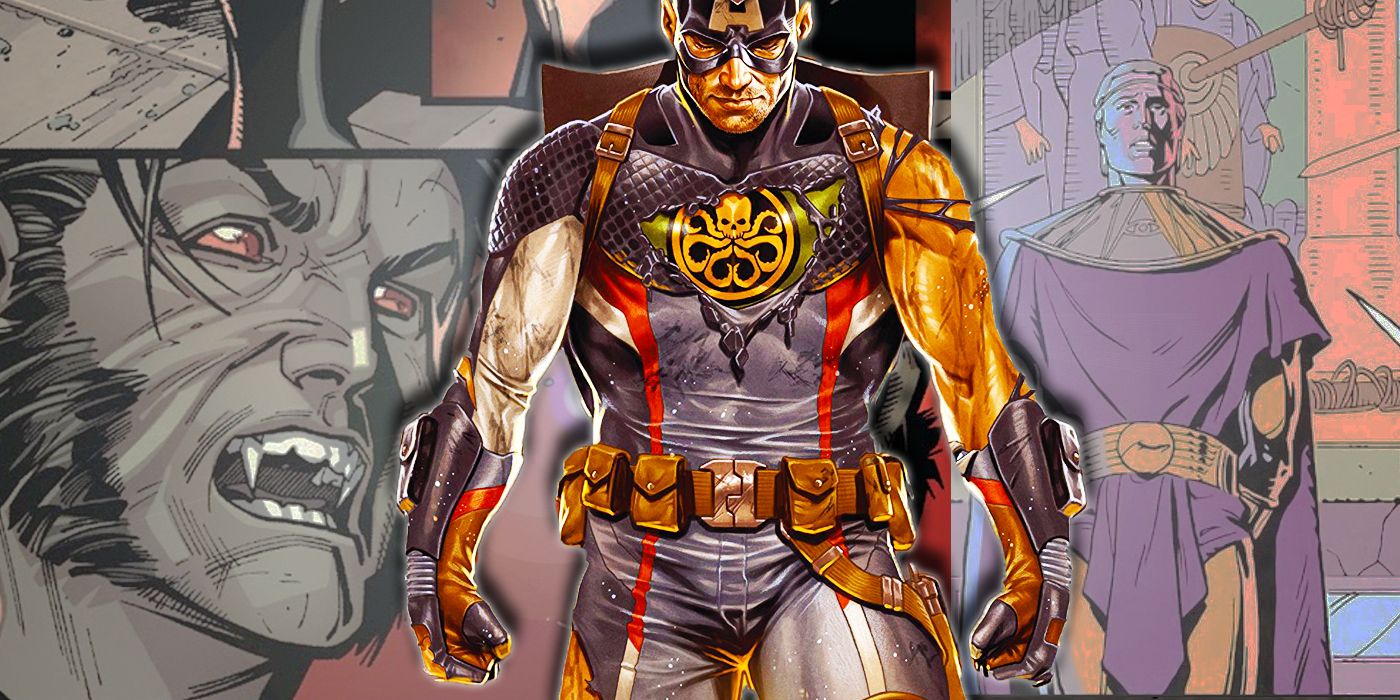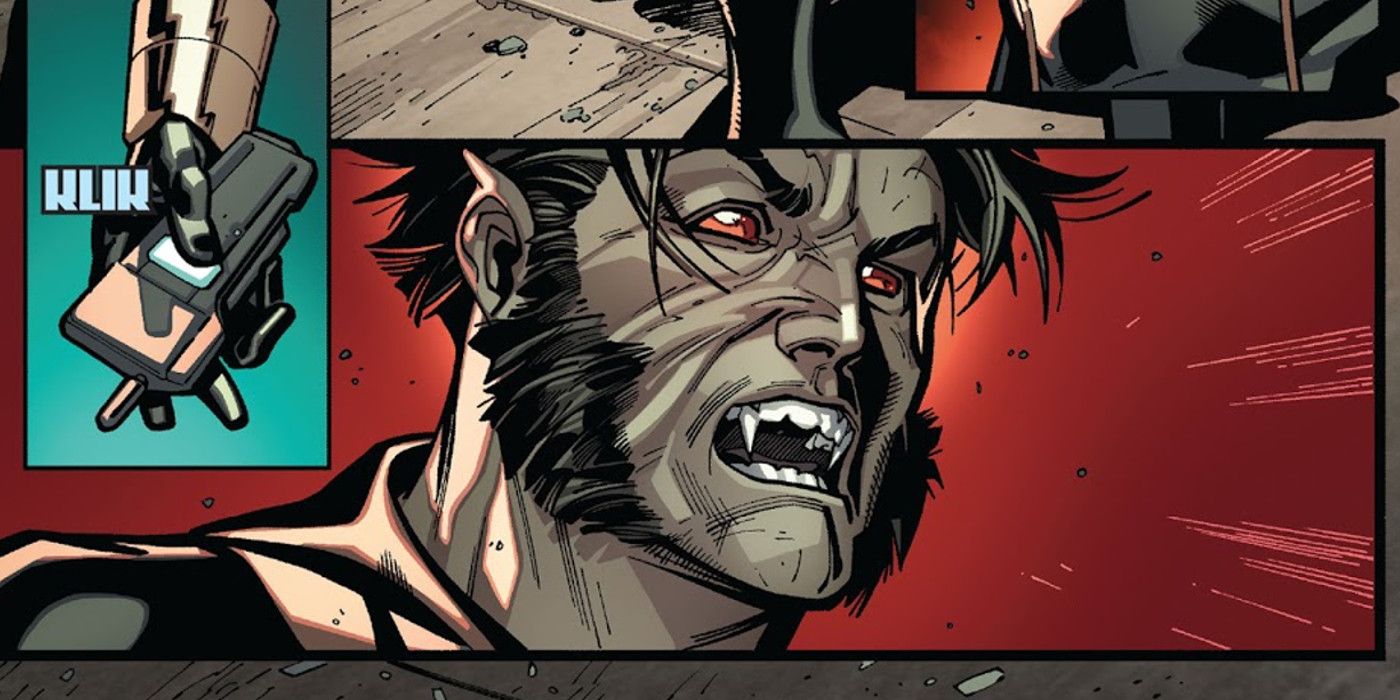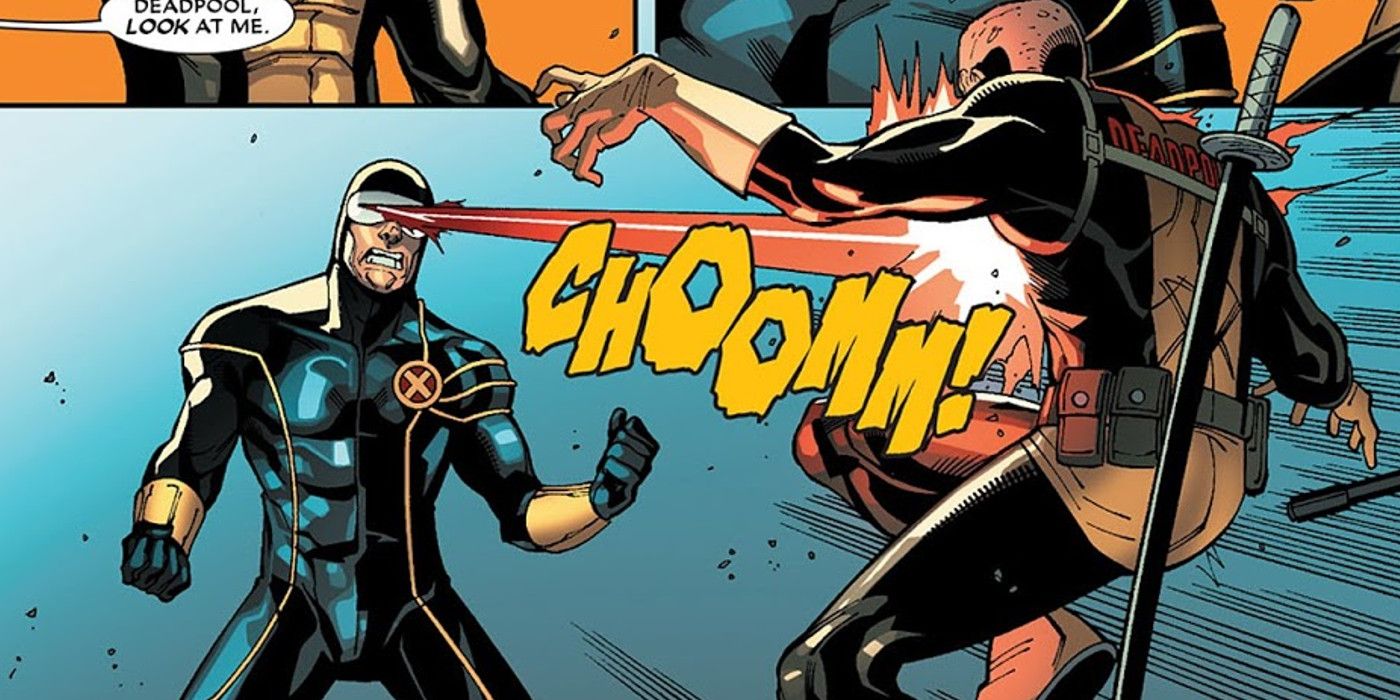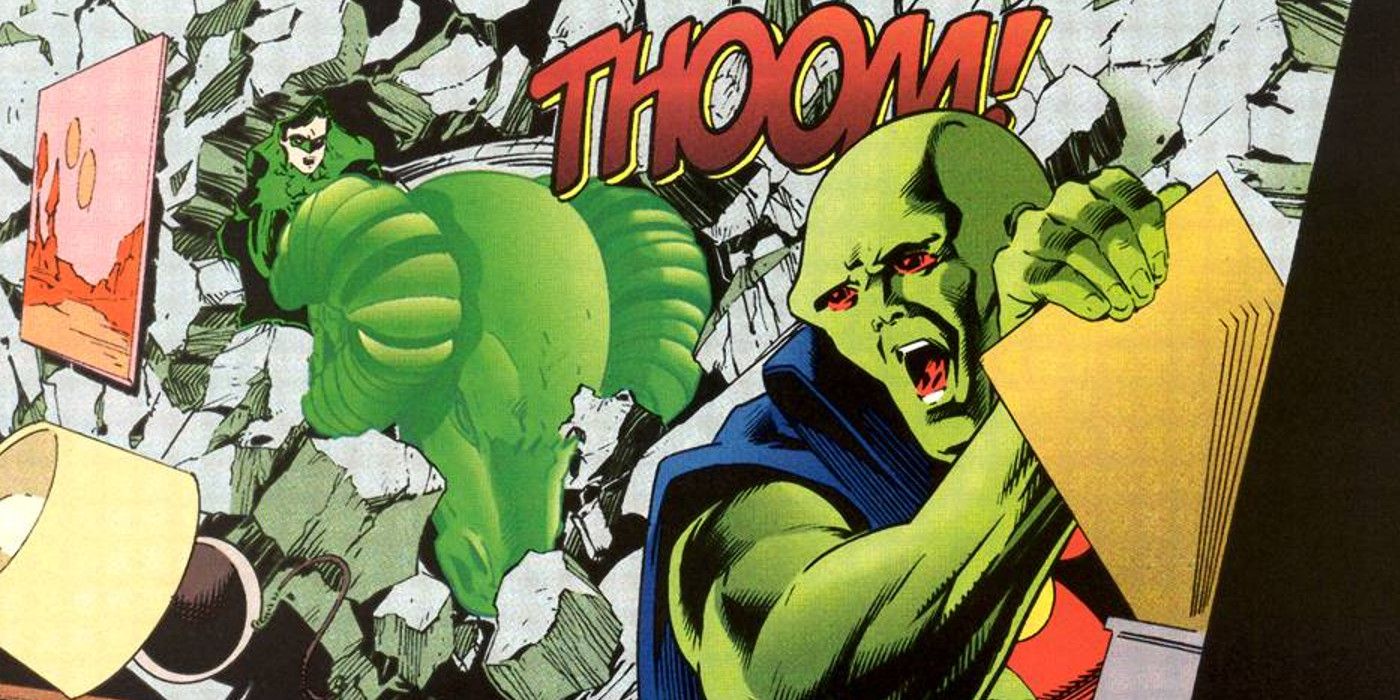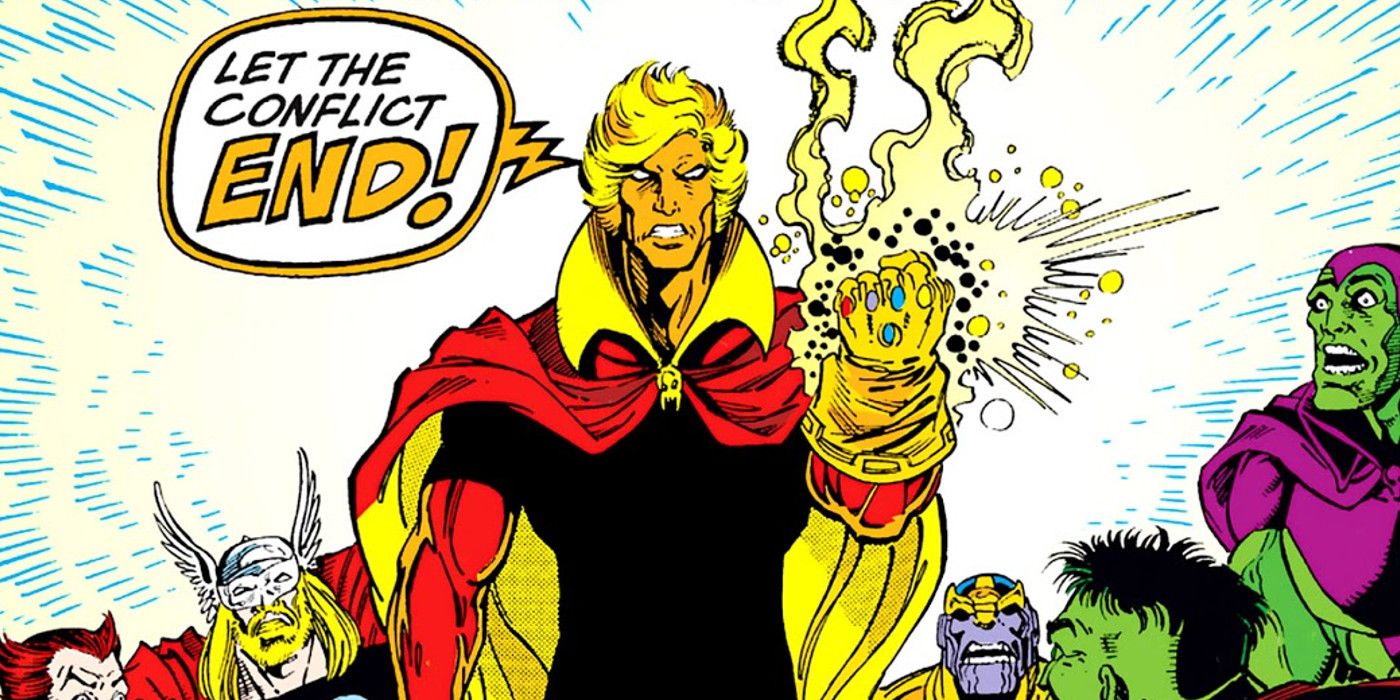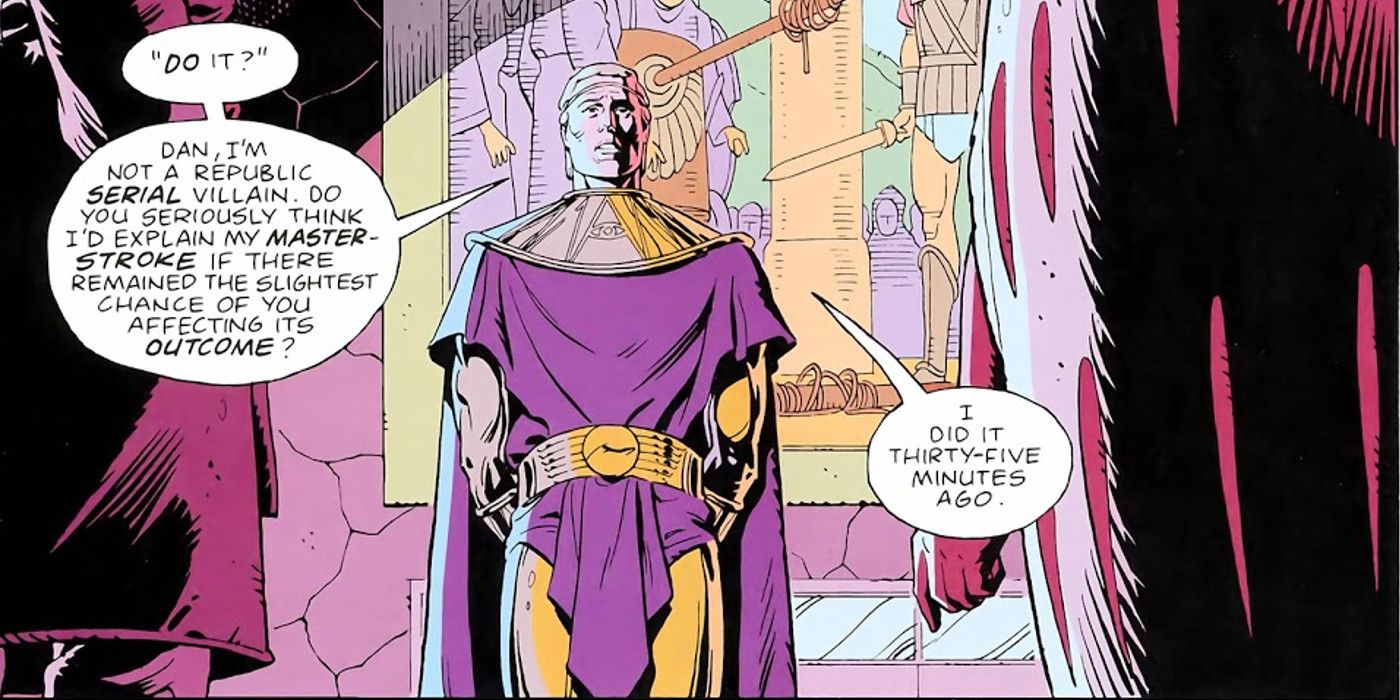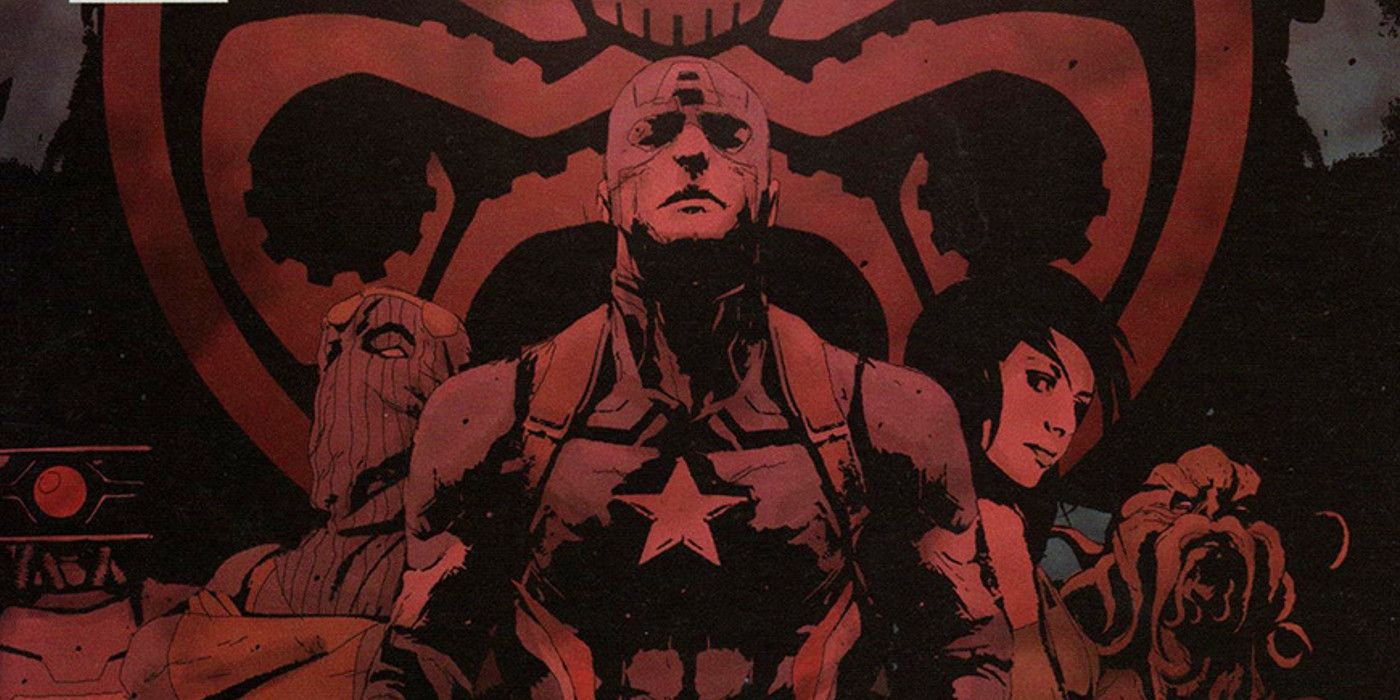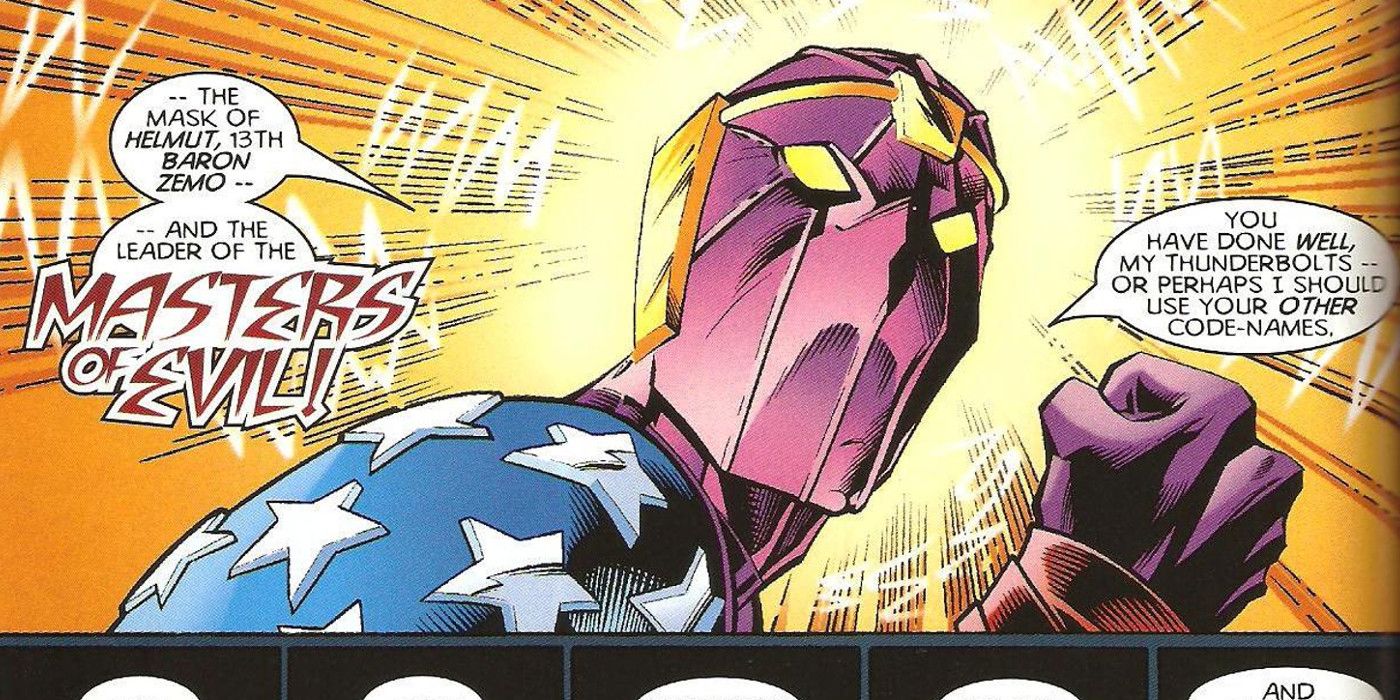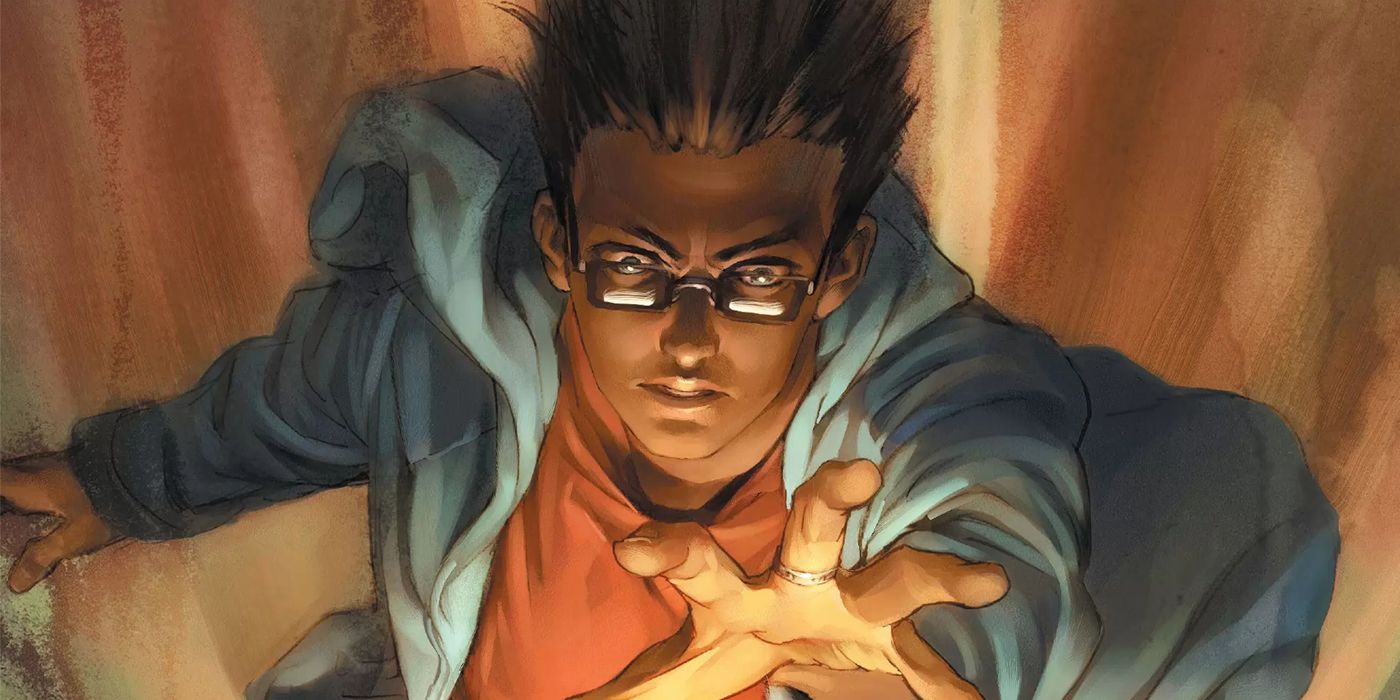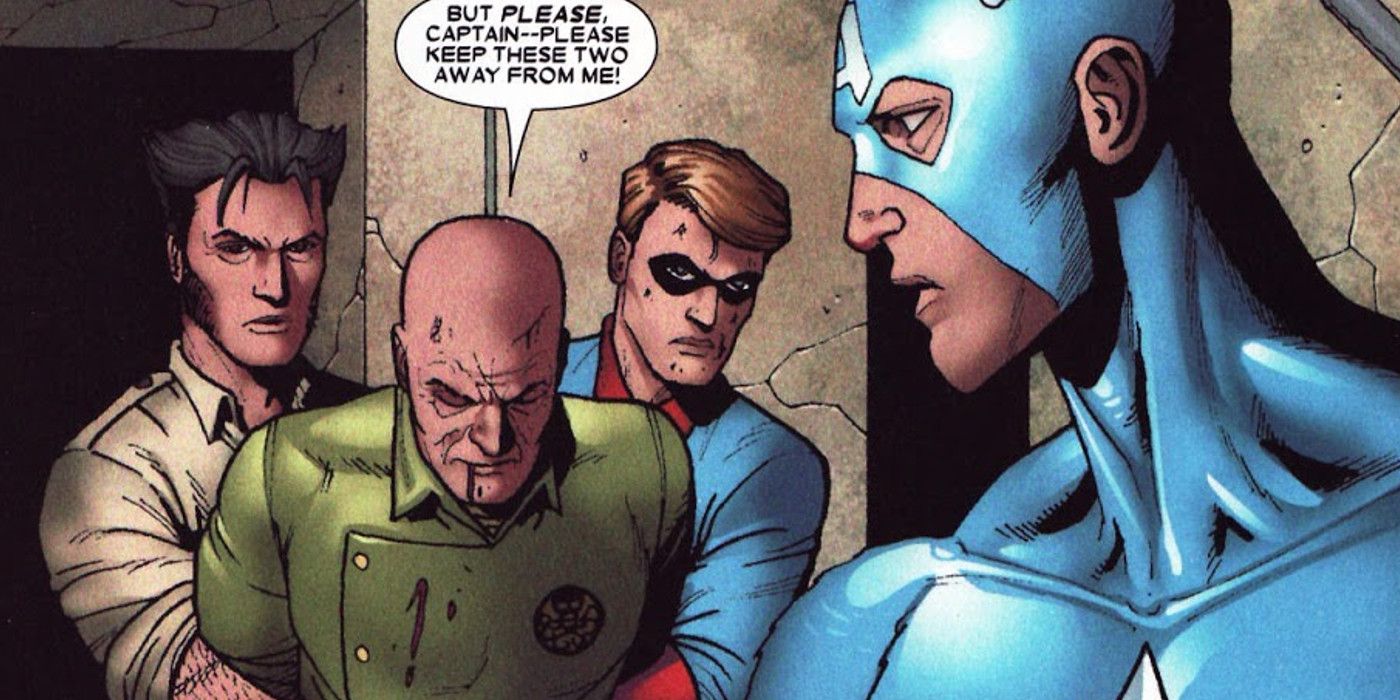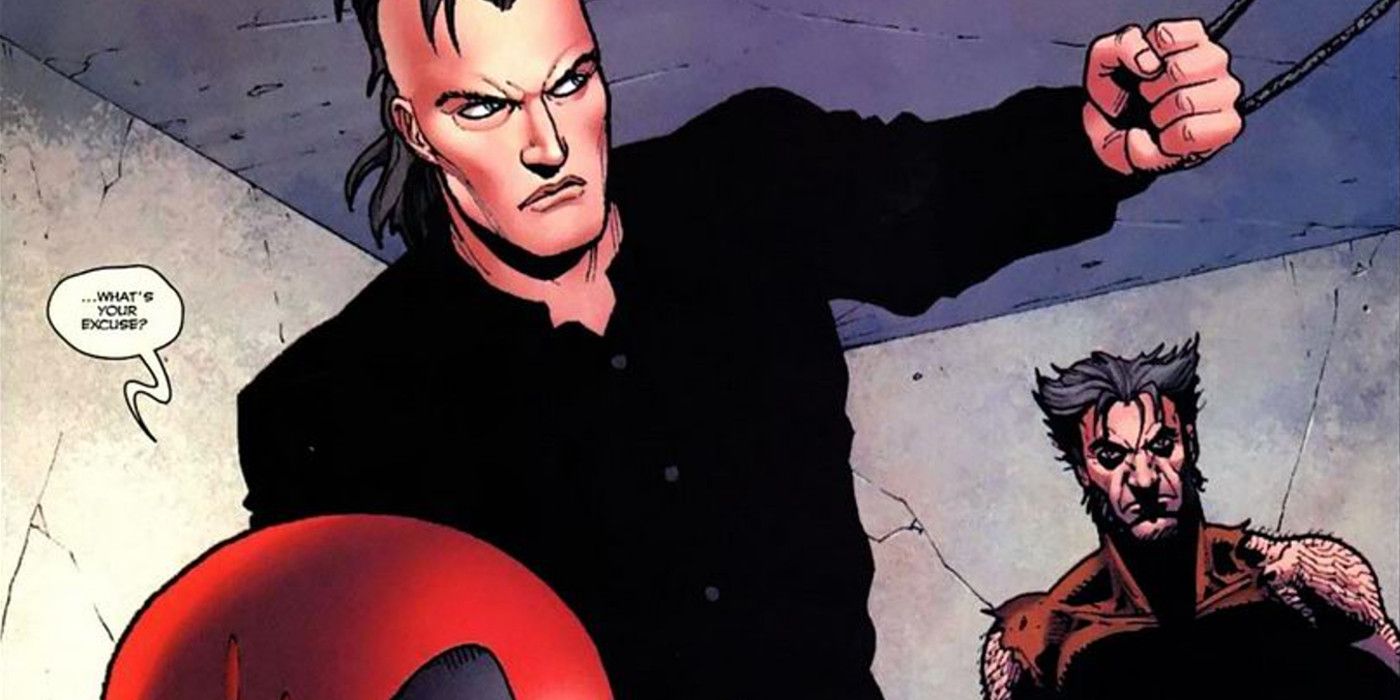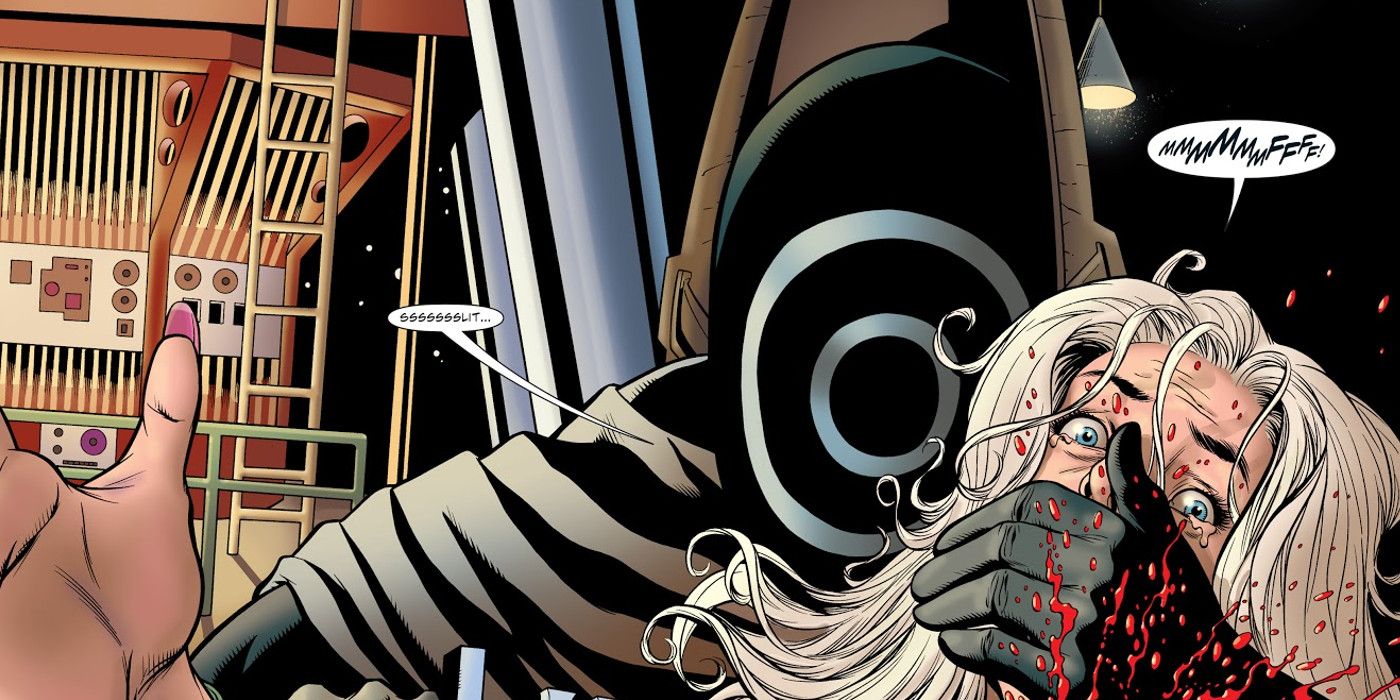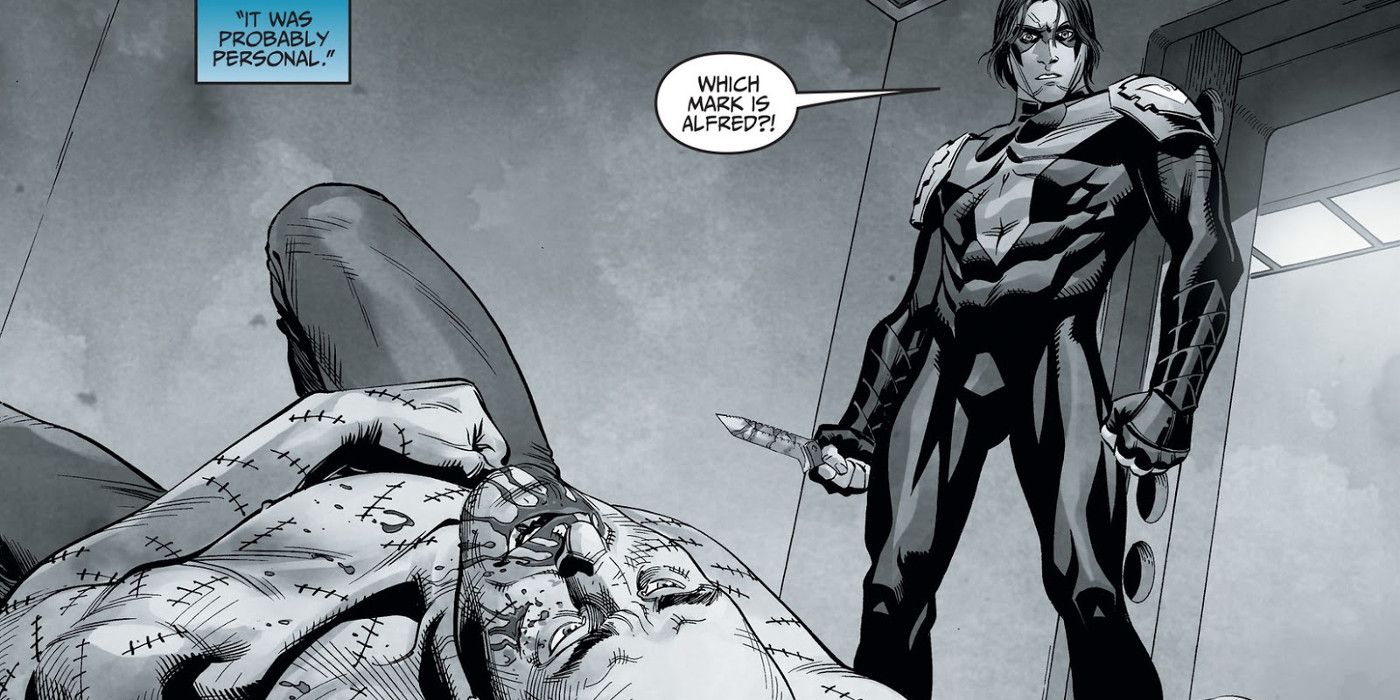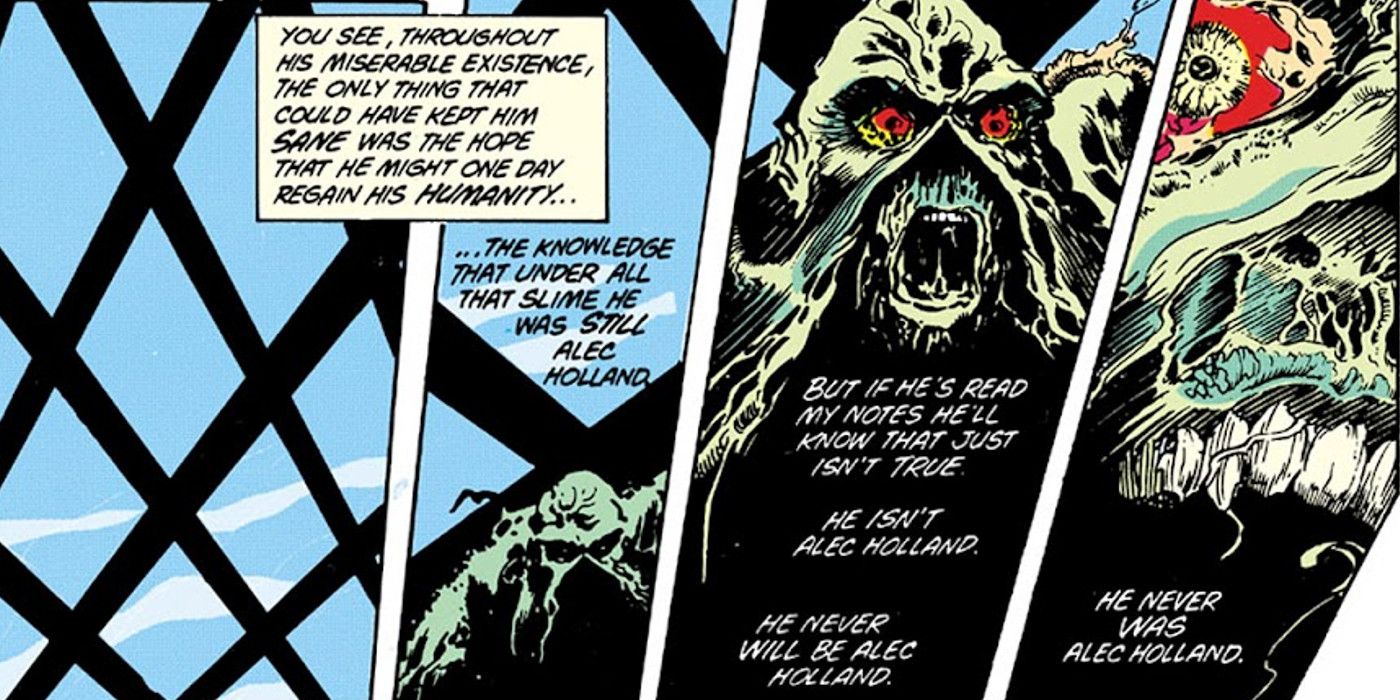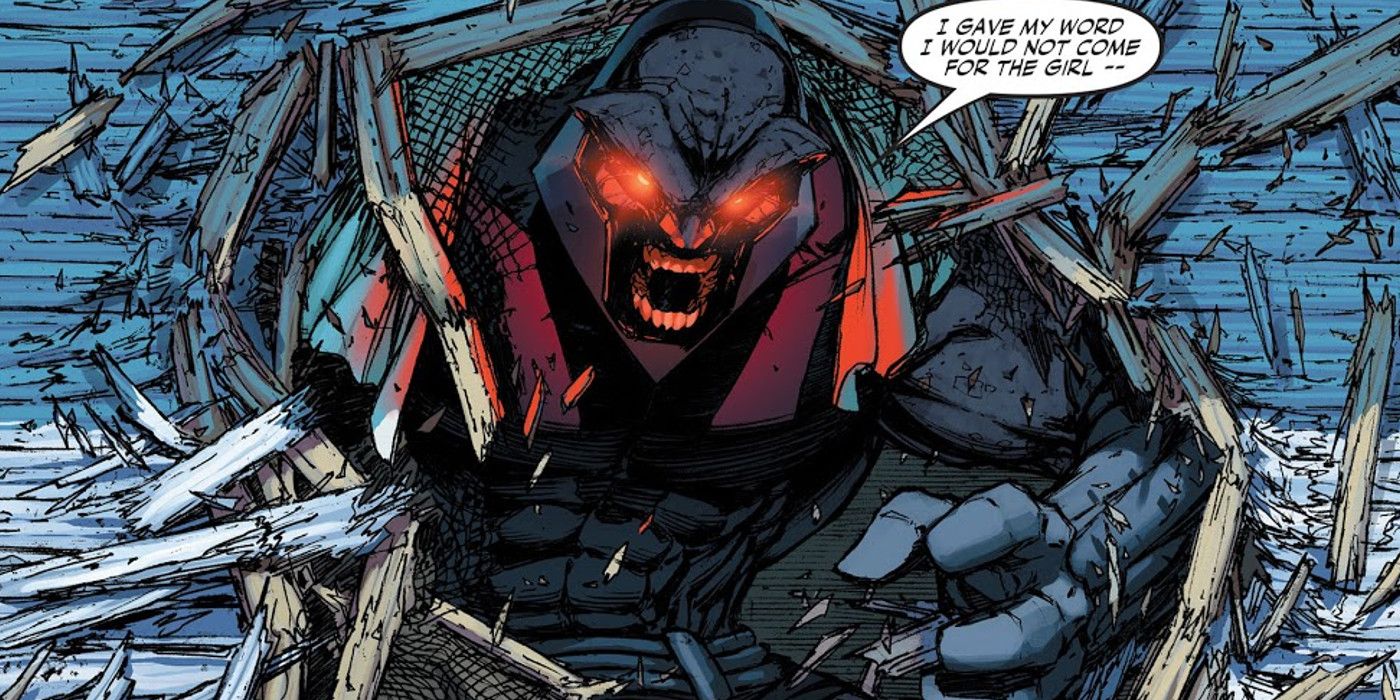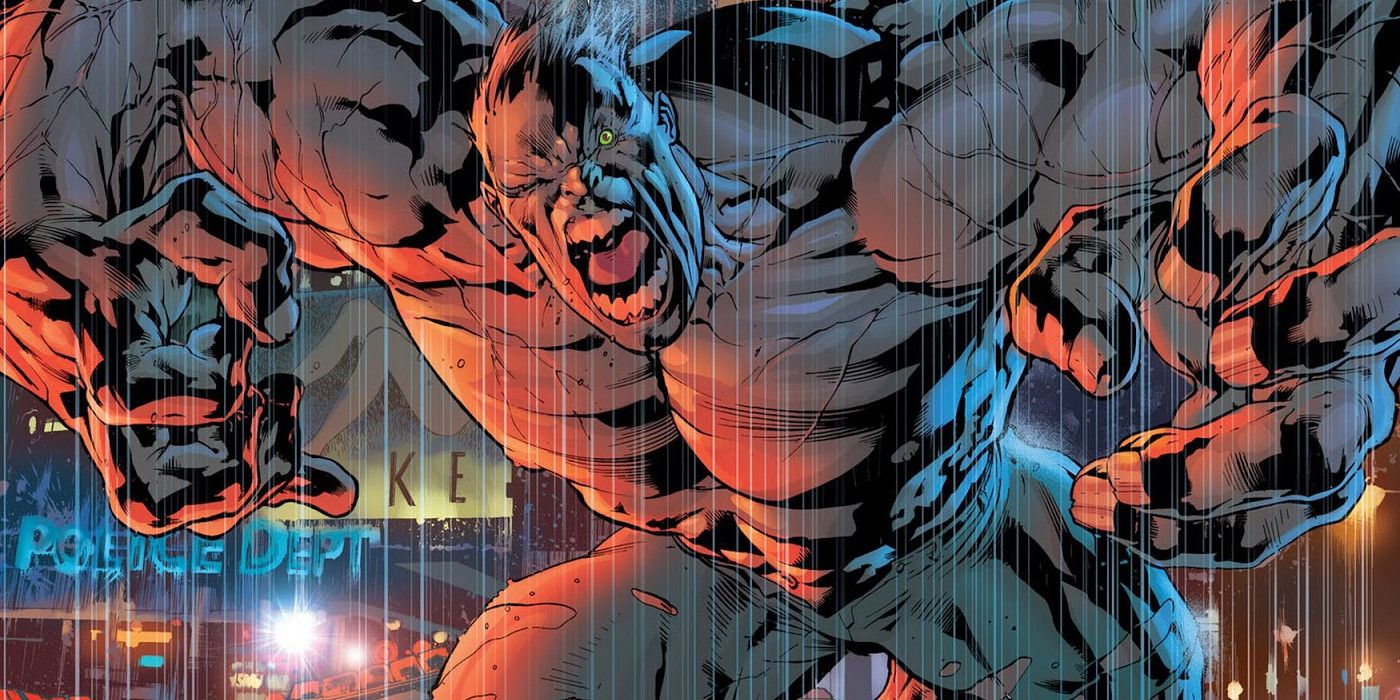If you’ve poked around enough on the Internet, you have may have heard the term "Batman Gambit" tossed around when classic Batman stories are brought up. A trope of modern pop culture, the Batman Gambit is any type of a plan that relies on intimate knowledge of one’s targets behavior in order to act out. By using this knowledge, actions are predicted and people are manipulated into doing exactly what you want them to do. What makes the Batman Gambit unique is that the plan can fall apart if the target acts out of character. The trope is, obviously, named after Batman because it’s a tactic so often used by him.
RELATED: 8 Superheroes Who Are Actually Total Jerks And 7 Who Are Incredibly Nice
There are so many memorable Batman gambits, such as telling Superman a well-hidden bomb would kill an innocent life (the bomb was in Batman’s belt, and the innocent life was Batman’s) or posing as a crime boss in the excellent The Animated Series episode "The Cape and Cowl Conspiracy." In fact, there are so many, it would be boring to just list his, so instead we’ve compiled the most amazing Batman Gambits used by other characters -- though the Dark Knight fell victim to a few on this list! Here are 15 INSANELY complex Batman Gambits… that actually worked!
15 CYCLOPS WILLINGLY ALLOWS VAMPIRES TO TURN WOLVERINE
Spearheading 2010’s soft relaunch of the adjective-less X-Men book, "Curse of the Mutants" played up an old thread of X-Men lore and had Marvel’s Merry Mutants encounter a horde of vampires led by Xarus, the son of Dracula. Teaming with the vampire hunter Blade and a begrudgingly resurrected Dracula, the X-Men come out victorious, but not before Cyclops plays a gambit of his own.
With Wolverine off to find the captured Jubilee, Cyclops secretly used nanites to turn off Wolverine’s healing factor, knowing the vampires would turn Logan and take him to Xarus. When Logan later led the attack on the X-Men base Utopia, Cyclops flipped the switch on the nanites, allowing Wolverine’s healing factor to burn off the vampire infection and return him to normal, with the added bonus of now knowing where they could find Xarus.
14 DEADPOOL PLAYED OSBORN, THE X-MEN AND A CHICKEN
Following Secret Invasion, Deadpool became persona non grata and was believed to have been assassinated by Bullseye. Dejected, alone, and with nowhere to go, he decided the only course of action was to become an X-Man! Even when he was turned away, Deadpool still decided to help the X-Men: when a parent was paid off by Norman Osborn to falsely accuse the X-Men of kidnapping his daughter, Deadpool set out to assassinate him.
Stalked by Domino and Wolverine, Wade got them off his trail using Domino’s innate fear of chickens. Then Wolverine caught on that Deadpool was intentionally shooting snipers sent by Osborn! Believing he was under attack, the intimidated parent spilled the guts about Osborn’s payoff. By posing himself as the villain, Deadpool made the X-Men look like heroes in the public eye again, a gambit so absurd and efficient that even Cyclops was impressed.
13 MARTIAN MANHUNTER SECRETLY KEEPS TABS ON THE JLA
This one’s pretty interesting as it’s roughly what Batman did in the infamous JLA storyline "Tower of Babel" (later adapted as the animated feature Justice League: War), but in the hands of someone else it was wholly inefficient. In Mark Waid’s JLA: Year One, J’onn is caught using a variety of identities to stalk his fellow League members through their personal lives.
J’onn had acted out of fear: as the last Martian, the first thing he saw his fellow Earthlings do was defeat an invading alien and celebrate their victory. However, the breach of trust didn’t go over well with the newly formed Justice League of America. His teammates were initially furious, attacking J’onn before they realized the reason for his actions. The team eventually rebounded, stronger for the experience, just in time to stop the Appellaxian invasion.
12 ADAM WARLOCK'S INFINITY GAMBIT
Adam Warlock takes on a bit of a chess master persona in 1991’s The Infinity Gauntlet. Recently resurrected, he appears to be playing both sides of the board as he enlists the remaining heroes of Earth to launch a suicidal attack on Thanos. But as is quickly revealed, everything is going exactly according to Warlock’s plan.
The Infinity Gauntlet was yet another example that Thanos, despite being terrifyingly powerful, would always prove to be the maker of his own undoing. Warlock knew he would give the heroes a chance to win, and would eventually succumb to losing the Gauntlet. By playing these odds, Warlock was able to gain possession of the Gauntlet himself with minimal effort, and even see through to the day’s gruesome events being undone.
11 YOU KNEW THIS ENTRY WAS ON THIS LIST 35 MINUTES AGO
Despite the trope being named for Batman, there is perhaps no more famous Batman gambit than the conclusion of Alan Moore’s classic, Watchmen. Nite-Owl and Rorschach arrive at the North Pole to stop their former comrade Ozymandias’ master plan, an attack on New York that will kill countless. Ozymandias’ legendary reply: he wouldn’t have told them his plan if they stood a chance of stopping him. He already launched the attack 35 minutes ago.
Watchmen is a rare example of a Batman gambit simultaneously succeeding and failing. Yes, Ozymandias creates a tenuous world peace, united against the “alien” that attacked New York. And yes, he’s strong-armed the surviving Nite-Owl, Silk Spectre, and Doctor Manhattan into keeping quiet. But Watchmen’s final page, with Rorschach’s journal being found in a newspaper’s mail slot, implies that Ozymandias’ master plan wasn’t a success for terribly long.
10 STEVE ROGERS' SECRET EMPIRE
Let’s make no bones about it, what Steve Rogers did in Secret Empire is absolutely despicable. As a sleeper agent for Hydra, it’s up in the air as to whether the Cosmic Cube made him a Hydra agent or if it had made him an American hero. But with the world at his beck and call, Steve Rogers' new world order is absolutely a prime example of a Batman gambit in action.
Steve’s gambit worked excellently against the heroes of the world, playing off their fears (and their innate trust in Captain America) to oust Maria Hill, create a world protecting satellite and give himself ultimate power. But it also played against Hydra leader Red Skull, separating him from his followers and tricking him into a false sense of security. The end game is absolutely awful, but it’s a successful gambit nonetheless.
9 BARON ZEMO AND THE THUNDERBOLTS
You would be hard-pressed to find a more shocking twist than 1997’s Thunderbolts #1. Having first debuted as a new team of heroes, nobody could have guessed they were a team of villains. Led by Baron Zemo, the former Masters of Evil had a genius plan: earn the trust of a disheartened world by filling the void left behind by The Avengers, who were believed to have died during the Onslaught encounter.
The gambit arguably worked. As one of the few teams of heroes trusted in the public eye, the Thunderbolts got free reign to anything they wanted. But the gambit fell apart when Zemo failed to understand the rest of the team’s ambitions. They found out they liked being heroes, which was much more rewarding than villainy and ultimately led to the public reveal of their ruse.
8 ALEX WILDER’S PLAN
The shocking twist at the end of the first volume of Runaways left readers reeling. The apparent leader of the team, Alex Wilder betrayed his friends to steal their abilities and align with his parents, intending to take the seats in paradise for themselves. His deception was masterful, keeping an emotional distance and allowing them to feel like they made decisions for themselves right up until the very end.
Wilder’s gambit would have worked, but he was unable to sway Nico Minoru, whose refusal threw the plan into disarray. Alex tried to pull things back into order, even taking full responsibility with the mysterious Gibborim for losing their latest sacrifice, but is killed for his actions. Wilder spent some time in Hell but recently returned to form a new Pride in the pages of Power Man & Iron Fist.
7 LOGAN PULLS A FAST ONE ON CAP AND HYDRA
Wolverine: Origins tackled the death of Captain America with Logan reminiscing about an encounter they had during World War II. While infiltrating a Hydra stronghold to capture Baron Strucker, Logan learns his handler Seraph is working with Strucker, and Logan is ordered to kill Cap! Logan finds himself at odds, as he has immense respect for Captain America and what he stands for, but knows he can’t get all of them out of Strucker’s stronghold alive.
His solution is to turn Strucker in to Cap as a prisoner. When they get away, the plane is shot down and Logan appears to turn traitor by turning in Cap. But Cap doesn’t realize that Logan didn’t turn in Bucky, and as Zemo and Strucker are distracted by Captain America beating the hell out of Logan, Bucky shoots Logan in the gut before running off the other Hydra agents.
6 BUCKY PULLS A FAST ONE ON DEADPOOL FOR LOGAN
Believed to have died in the womb, Logan's erstwhile son Daken was alive and... well, pretty damn crazy. Raised only to hate his father, Daken and Logan clashed in Wolverine: Origins until Wolverine came up with a plan to incapacitate his son long enough to save him, and it involved none other than The Winter Soldier himself, Bucky Barnes and The Regenerating Degenerate, Deadpool.
Disguised as a S.H.I.E.L.D. Agent, Bucky hired Deadpool to kill Logan in a very big, very public spectacle, knowing the fight would draw out Daken. Refusing to let anyone else kill his father, Daken took out Deadpool and freed Logan with the intent of killing him. But it was what they expected Daken would do, and Bucky shot Daken from a sniper perch with a Carbonadium bullet that nullified his healing factor long enough for Logan to get Daken into his custody.
5 ONOMATOPOEIA’S WIDENING GAMBIT
Onomatopoeia is the fan favorite villain created by Kevin Smith for his Green Arrow run, though the character hasn’t been seen in some time. Possibly a metahuman, Onomatopoeia is one of the few characters to successfully pull a Batman gambit on the man himself, Batman, and it all happened in Kevin Smith’s 2009 series Batman: The Widening Gyre.
Onomatopoeia earned Batman’s trust by posing as Baphomet, a new hero in Gotham. Slowly but surely he eventually chipped away at Batman’s cool, steely demeanor until he brought Baphomet into the Batcave and unmasked in front of him. In the belly of the beast, Onomatopoeia revealed his true identity as he slit Silver St. Cloud’s throat in a cliffhanger for the ages. The book was intended to run for another six issues after a short hiatus, but suffered constant delays and has, to date, never been completed.
4 SUPERMAN PLAYS THE GAMBIT AGAINST BATMAN
Damian Wayne is a pretty tragic figure in the spectacular Injustice: Gods Among Us comic adaptation. Responsible for the accidental death of Nightwing, Damian spends years siding with Superman’s Regime and fighting against the resistance led by his father, Batman. But Damian is torn between both worlds, regularly visiting Alfred Pennyworth in the remains of the Batcave as Batman remains in hiding.
After a point, Damian is clearly starting to sway under Alfred’s influence, and Superman decides he can’t risk losing the son of Batman. Superman releases the killer Victor Zsasz to murder Alfred, allowing Damian to find his body in the Batcave. Damian is furious and despite Batman’s insistence, he allows the Regime to take Zsasz into custody. Zsasz is later secretly murdered in his cell by Damian, moving his allegiance permanently to the Regime.
3 THE FLORONIC MAN’S SWAMPY GAMBIT
Saga of the Swamp Thing #21 changed comics history. Jason Woodrue, also known as The Floronic Man, was hired by Avery Sunderland to do an autopsy on the body of Alec Holland, who had long since mutated into the monstrous Swamp Thing. Woodrue found some disturbing truths in his autopsy: Swamp Thing was not Holland, but a living plant which believed it was human. But he was ignored when he brought this up, and summarily fired.
Woodrue exacted revenge, though, knowing Sunderland would be the last one to leave. He also knew how Swamp Thing would react to learning he wasn’t really a man. So he thawed out Swamp Thing’s body, left the research notes out where they could be found and made sure the exits couldn’t be unlocked. Upon learning the truth of his origin, Swamp Thing’s mind snapped, and he killed the trapped and ambitious Sunderland.
2 DARKSEID’S GAMBIT WORKS AGAINST HIM
Jeph Loeb and Michael Turner’s The Supergirl From Krypton story reinvented Supergirl for a modern generation. Spanning Superman/Batman #8-13, the story introduced Kara Zor-El, Superman’s cousin who had been sent from Krypton alongside him. Darkseid kidnaps Kara, intending her to lead the Female Furies, but they manage to save her when Batman lays down an ultimatum: swear to never come after Kara, or he’ll blow up Apokolips.
Darkseid agrees, knowing they’ll eventually head to Smallville, where he lies in wait intending to kill Superman, but his Omega Beam misses and reduces Kara to ash. A furious Superman lashes out at Darkseid, eventually trapping him in the Source Wall... but it turns out it was all a Batman Gambit itself. Knowing Darkseid would attack, they teleported Kara out at the last second, faking her death and giving her time to decide if she wanted a life in the public eye.
1 BRUCE BANNER’S ULTIMATE GAMBIT
Ultimate Bruce Banner may be the most starkly different version of any character in the Ultimate Universe. Earth-1610’s Banner is, honestly, a garbage pile of a person. Cowardly and neurotic, the insecure Banner is constantly seeking approval after years of being bullied and badgered. His one claim to fame is his work on the Super Soldier formula, though even that backfired and created The Hulk.
In The Ultimates, it looks like the project is going to be discontinued and Bruce’s work on the formula stopped. So to prove the world needs the team, Banner mixes his Hulk formula with Steve Rogers’ blood to create a threat for the team to shut down in their first public outing. It goes terribly, to say the least, with multiple casualties and some pretty disturbing threats. The team’s combined efforts do eventually shut down The Hulk though, making Banner’s gambit technically a success.
Do you know any other examples of Batman Gambits in comics? If so, let us know in the comments!

